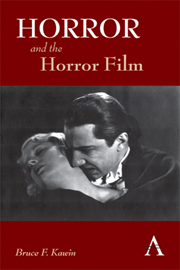4 - Monsters
from Part II - Subgenres: The Book of Monsters
Summary
Monsters gather, concentrate and express horror as if they were focusing it.
What we ordinarily call a monster does not depend on the supernatural to exist. It is a dangerous and repulsive creature, perhaps deformed, perhaps gigantic, perhaps composed of the parts of different animals or plants, an aberration, not human or no longer simply human, a thing. The monster is physical, not metaphysical, and it can die. Often it requires unusual conditions for its creation or intrusion, and just as often it can be destroyed only in a special way. But it must be destroyed. As Ludwig Frankenstein (Sir Cedric Hardwicke) says of the Monster in The Ghost of Frankenstein (Erle C. Kenton, 1942, US), uttering what could be the motto of all monster movies, “While it lives, no one is safe.” When the monster has been killed, the typical monster movie is over. It is the cause of the problems that motivate the plot, even if sometimes it may also stand for other threats, as Godzilla is both a gigantic monster and an image of the dangers of radiation, war and nuclear testing.
A monster's destructiveness and repulsiveness may be a matter of its physical form. We fear a monster because of its awful appearance and its power, and because of the terrible things it can do to us or to those with whom we identify or sympathize. It is dreadful to look upon.
- Type
- Chapter
- Information
- Horror and the Horror Film , pp. 50 - 90Publisher: Anthem PressPrint publication year: 2012



